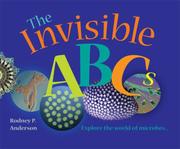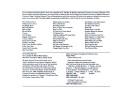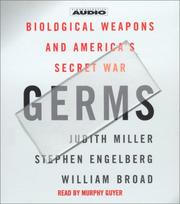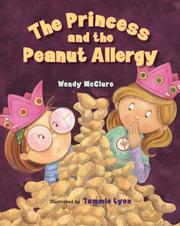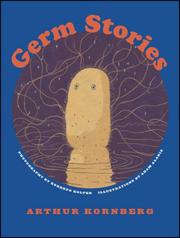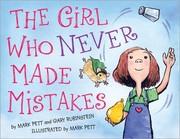Are you looking for the perfect book on germs for kindergarten? Teaching young children about germs and hygiene is important, especially in today’s world. Introducing them to the concept of germs through engaging and informative books can make this learning experience fun and educational. Whether you’re a teacher, parent, or caregiver, finding the right books about germs for kindergarten can be a game-changer. From colorful illustrations to simple explanations, these books are designed to capture the attention of little ones while teaching them about the importance of staying healthy. Here are 20 of the best germs for kindergarten books that are sure to be a hit with the little ones.
Contents
- 1 20 Best Germs For Kindergarten Books
- 2 Germs Are Not for Sharing
- 3 The Invisible ABCs
- 4 The Bacteria Book
- 5 The Germ Patrol: All About Shots for Tots
- 6 The Invisible Kingdom: From the Tips of Our Fingers to the Tops of Our Trash, Inside the Curious World of Microbes
- 7 Germs Make Me Sick!
- 8 The Bacteria Book: The Big World of Really Tiny Microbes
- 9 The Invisible String
- 10 Germs: Biological Weapons and America’s Secret War
- 11 The Invisible Man
- 12 The Invisible Man
- 13 Germs: Genes, & Civilization: How Epidemics Shaped Who We Are Today
- 14 The Princess and the Peanut Allergy
- 15 Germ Stories
- 16 Yucky Worms
- 17 Germs Make Me Sick
- 18 The Girl Who Never Made Mistakes
- 19 Sick Simon
- 20 The Yucky Reptile Alphabet Book
- 21 The Invisible World of Microbes
- 22 Final Thoughts on Best Germs For Kindergarten Books
- 23
20 Best Germs For Kindergarten Books
Germs Are Not for Sharing
by Elizabeth Verdick
Germs Are Not for Sharing by Elizabeth Verdick is a lively and engaging book about the importance of personal hygiene and understanding germs for kindergarten-aged children. Through colorful illustrations and simple language, this book teaches young readers about the concept of germs and the importance of keeping them at bay.
The book covers topics such as washing hands, covering sneezes and coughs, and keeping personal items like toys and utensils clean. It also emphasizes the importance of sharing without sharing germs, a concept that is particularly relevant in a kindergarten setting. The book’s interactive approach encourages children to think about their own habits and how they can help prevent the spread of germs.
With its fun and approachable style, Germs Are Not for Sharing is an essential resource for parents, teachers, and caregivers looking to educate young children about the importance of hygiene and staying healthy. This book about germs for kindergarten is sure to make learning about germs a fun and memorable experience for young readers.
The Invisible ABCs
by Rodney P. Anderson
The Invisible ABCs by Rodney P. Anderson is a captivating and educational book about the microscopic world of germs. This engaging book takes young readers on a journey through the alphabet, teaching them about different types of germs and the importance of hygiene. From A for Antibodies to Z for Zoonotic, this book provides a fun and informative way for children to learn about the invisible world around them.
With colorful illustrations and easy-to-understand language, The Invisible ABCs is the perfect book for young children to learn about the importance of washing their hands, covering their mouths when they cough, and staying healthy. This book is a valuable resource for parents and educators who want to teach children about the significance of good hygiene and how to stay safe from harmful microorganisms. The Invisible ABCs is a must-have book for any classroom or home library, providing an entertaining and educational introduction to the world of germs for kindergarten-aged children.
The Bacteria Book
by Steve Mould
The Bacteria Book by Steve Mould is an engaging and informative exploration of the microscopic world of bacteria. This fascinating book takes young readers on a journey into the world of tiny organisms, offering a fun and educational look at the diverse and often misunderstood world of microbes. Through colorful illustrations and easy-to-understand explanations, children can learn about the different types of bacteria, their characteristics, and their role in the world around us.
With its interactive approach, The Bacteria Book is the perfect resource for introducing young children to the concept of microorganisms in a way that is both entertaining and educational. This book is an excellent choice for parents and educators looking to spark curiosity and understanding about the hidden world of bacteria in a fun and accessible way. Whether used at home or in the classroom, The Bacteria Book is a must-have for anyone seeking to provide an engaging introduction to the fascinating world of microbes.
The Germ Patrol: All About Shots for Tots
by Neil Shulman
The Germ Patrol: All About Shots for Tots by Neil Shulman is a delightful and informative book about germs for kindergarten kids. Through engaging illustrations and easy-to-understand language, this book teaches young readers about the importance of vaccinations and how they help protect them from harmful bacteria and viruses. The book covers a range of topics, from the history of vaccines to how they work in the body, all while emphasizing the importance of staying healthy and preventing the spread of illnesses. Shulman’s fun and relatable approach makes learning about germs for kindergarten kids a breeze, and the book is sure to spark curiosity and conversation about staying healthy and safe. This book about germs for kindergarten is a valuable resource for parents, educators, and healthcare professionals who want to teach children about the importance of vaccinations in a fun and engaging way.
The Invisible Kingdom: From the Tips of Our Fingers to the Tops of Our Trash, Inside the Curious World of Microbes
by Idan Ben-Barak
The Invisible Kingdom: From the Tips of Our Fingers to the Tops of Our Trash, Inside the Curious World of Microbes by Idan Ben-Barak is a fascinating exploration of the microscopic world of microbes. This book takes readers on a journey through the unseen kingdom of germs, bacteria, and other tiny organisms that play a crucial role in our daily lives.
Through engaging storytelling and colorful illustrations, Ben-Barak introduces young readers to the concept of germs and their impact on the world around us. From the bacteria on our skin to the microbes in our food, this book provides a comprehensive look at the invisible world that shapes our environment.
With a mix of science and storytelling, The Invisible Kingdom is a perfect book about germs for kindergarten or any young reader curious about the microscopic world. It’s an engaging and educational read that will leave kids fascinated by the tiny creatures that surround us every day.
Germs Make Me Sick!
by Melvin Berger
Germs Make Me Sick! by Melvin Berger is an engaging and informative book about the fascinating world of microbes and how they affect our health. This book is perfect for curious kindergarten students who want to learn about the tiny organisms that can make us sick.
Through colorful illustrations and easy-to-understand language, young readers will discover how germs, bacteria, and viruses can enter our bodies and make us feel unwell. The book also explores basic hygiene practices and simple ways to stay healthy, making it a valuable resource for early childhood education.
With its fun approach to a serious topic, Germs Make Me Sick! is a must-have for any kindergarten classroom or home library. It encourages young readers to be proactive about their health and empowers them with knowledge about germs and how to protect themselves. This book about germs for kindergarten is a fantastic tool for starting important conversations about health and hygiene.
The Bacteria Book: The Big World of Really Tiny Microbes
by Steve Mould
The Bacteria Book: The Big World of Really Tiny Microbes by Steve Mould is a fascinating and engaging exploration of the microscopic world of bacteria. This book is perfect for young readers who are curious about the tiny organisms that surround us every day. With colorful illustrations and easy-to-understand language, Mould takes readers on a journey through the diverse and complex world of bacteria. From the history of microbiology to the important role that bacteria play in our everyday lives, this book covers it all. Children will learn about the different types of bacteria, how they live and reproduce, and the ways in which they can both help and harm us. With fun facts and interactive experiments, The Bacteria Book is a captivating and educational read for kids who are interested in science and the natural world. This book about germs for kindergarten is sure to inspire young minds and spark a lifelong curiosity about the amazing world of microbes.
The Invisible String
by Patrice Karst
The Invisible String by Patrice Karst is a heartwarming and reassuring book about the invisible connection that exists between loved ones. Using the metaphor of an invisible string, the book explores the idea that we are always connected to the people we love, no matter where they are. Whether it’s a parent who is at work, a grandparent who lives far away, or a friend who is on vacation, the invisible string is always there, linking us together.
Through beautiful illustrations and simple language, The Invisible String helps children understand the concept of connection and provides them with a sense of comfort and security. It’s a wonderful book to read with children who may be experiencing separation anxiety or feeling lonely, as it reassures them that they are never truly alone.
Overall, The Invisible String is a touching and powerful book that teaches children about the invisible bonds that connect us all.
Germs: Biological Weapons and America’s Secret War
by Judith Miller
“Germs: Biological Weapons and America’s Secret War” by Judith Miller is a gripping account of the deadly world of biological warfare. Miller takes readers on a journey through the history of biological weapons, from their use in ancient times to their terrifying potential in the modern age. She delves into the secretive world of bioterrorism, uncovering the terrifying capabilities of deadly germs and the efforts to combat them.
This book is not just a dry historical account, but a thrilling exploration of the shadowy world of biological weapons and the people who work to protect us from them. Miller’s meticulous research and engaging writing style make this book a must-read for anyone interested in the science of germs and the real-life threats they pose. It’s a fascinating and eye-opening read that will leave you with a newfound appreciation for the complexities of the microscopic world around us.
The Invisible Man
by H.G. Wells
The Invisible Man by H.G. Wells is a gripping science fiction novel that follows the story of a mysterious scientist named Griffin who discovers the secret to invisibility. However, his newfound power leads him down a dark path as he becomes increasingly isolated and unhinged. As he struggles to cope with his invisibility, Griffin’s descent into madness and his desperate attempts to regain his visibility make for an intense and thrilling read. The novel explores themes of power, identity, and the consequences of unchecked ambition. With its compelling narrative and thought-provoking themes, The Invisible Man is a timeless classic that continues to captivate readers with its exploration of the human psyche and the potential dangers of scientific discovery.
The Invisible Man
by Ralph Ellison
The Invisible Man by Ralph Ellison is a groundbreaking novel that delves into the complexities of identity and societal invisibility. Set against the backdrop of racial discrimination in 20th-century America, the book follows the journey of an unnamed African American protagonist as he navigates through the challenges of being unseen and unheard in a prejudiced society. Through vivid storytelling and powerful imagery, Ellison’s work sheds light on the struggles of marginalized individuals and the impact of systemic oppression on personal identity.
With its thought-provoking exploration of invisibility and alienation, The Invisible Man is a compelling and resonant read that continues to captivate readers with its poignant themes and striking narrative. This timeless classic confronts issues of identity, social injustice, and the search for self-worth, making it a must-read for anyone seeking a deeper understanding of the human experience.
Germs: Genes, & Civilization: How Epidemics Shaped Who We Are Today
by David P. Clark
Germs: Genes, & Civilization: How Epidemics Shaped Who We Are Today by David P. Clark is a fascinating exploration of the impact of epidemics on human history and evolution. Through this book, readers will delve into the world of microbes, diseases, and the ways in which they have shaped human societies and genetics. From the Black Death to smallpox, Clark takes us on a journey through time, uncovering how these epidemics have influenced our cultural, social, and biological development.
With engaging storytelling and insightful analysis, Germs: Genes, & Civilization provides a compelling look at the interplay between germs and human civilization. This book is perfect for those curious about the history of diseases and their effects on human populations. Whether you’re a history buff, a science enthusiast, or simply intrigued by the impact of germs on our world, this book offers a thought-provoking exploration of a topic that is both fascinating and relevant to our understanding of who we are today.
The Princess and the Peanut Allergy
by Wendy McClure
The Princess and the Peanut Allergy by Wendy McClure is a charming and educational book for children. This delightful story follows a young princess who has a peanut allergy, teaching children about the importance of food allergies and how to be mindful and supportive of others who may have them. The book is not only entertaining but also serves as a valuable tool for teaching empathy and understanding. The colorful illustrations and engaging narrative make it a great read-aloud for young children, and it’s an excellent resource for starting conversations about food allergies and inclusivity. With its relatable characters and important message, The Princess and the Peanut Allergy is a must-have for any parent, teacher, or caregiver looking for a book that promotes kindness and awareness. This book is a wonderful addition to any child’s library and is sure to be a favorite for years to come.
Germ Stories
by Arthur Kornberg
Germ Stories by Arthur Kornberg is an engaging and informative book about microbes targeted towards children in kindergarten. This book takes young readers on an exciting journey into the microscopic world of bacteria, viruses, and other tiny organisms. Through captivating storytelling and vivid illustrations, Kornberg introduces young minds to the concept of germs in a fun and educational way.
Readers will learn about the different types of germs, how they spread, and the importance of good hygiene practices to stay healthy. The book also highlights the positive roles that some germs play in nature, fostering a well-rounded understanding of these tiny creatures. With its easy-to-understand language and colorful visuals, Germ Stories is a perfect introduction to the fascinating world of microbiology for children in kindergarten. It’s a must-have for any classroom or home library looking for a captivating and educational book about germs for kindergarten-aged kids.
Yucky Worms
by Vivian French
Yucky Worms by Vivian French is an engaging and informative picture book that introduces young readers to the fascinating world of earthworms. Through the story of a young boy who discovers a worm in his garden, the book provides a fun and educational exploration of the important role that worms play in the ecosystem. With colorful illustrations and simple language, the book captures the curiosity of young readers and encourages them to learn more about the natural world around them.
With its playful approach to the subject matter, Yucky Worms is a perfect choice for children who are curious about the world of nature and science. The book provides a great opportunity for parents and educators to start a conversation about the importance of worms and their role in maintaining healthy soil. Yucky Worms is a delightful and informative read that will leave young readers with a newfound appreciation for these slimy creatures.
Germs Make Me Sick
by Melvin Berger
Germs Make Me Sick by Melvin Berger is an engaging and informative book about the tiny, invisible organisms that can make us ill. Perfect for kindergarteners, this book takes young readers on a fascinating journey into the world of bacteria, viruses, and other germs. Through simple language and colorful illustrations, children will learn about how germs spread, how our bodies fight off germs, and the importance of good hygiene.
This book about germs for kindergarten is not only educational but also entertaining, as it explores the topic of germs in a way that is relatable and easy for young children to understand. With its lively and engaging approach, Germs Make Me Sick is a valuable resource for parents and teachers looking to introduce the concept of germs and hygiene to young learners. After reading this book, kindergarteners will have a better understanding of how to stay healthy and protect themselves from germs.
The Girl Who Never Made Mistakes
by Mark Pett
The Girl Who Never Made Mistakes by Mark Pett is an engaging and heartwarming story about a young girl named Beatrice Bottomwell who prides herself on never making mistakes. She excels at everything she does, from acing her tests to excelling at sports. However, Beatrice’s perfectionism is put to the test when she makes a big mistake during a talent show. As she navigates through this new experience, Beatrice learns the valuable lesson that it’s okay to make mistakes and that they can even be fun. With delightful illustrations and a relatable storyline, this book teaches children the importance of taking risks and embracing imperfection. It’s a perfect read for children who struggle with the fear of making mistakes and the pressure to be perfect.
Sick Simon
by Dan Krall
Sick Simon by Dan Krall is a hilarious and informative picture book that teaches kids about the importance of good hygiene. Simon’s love of all things gross and dirty leads him to neglect washing his hands and taking care of himself, resulting in him getting sick. As he goes about his day spreading germs to everyone he meets, the colorful illustrations and playful rhymes engage young readers in a fun and relatable way.
This book is a perfect introduction to the concept of germs for kindergarten kids, as it addresses the importance of handwashing and taking care of oneself to stay healthy. The vibrant and expressive artwork brings the story to life, making it an engaging read for children. Sick Simon is a great addition to any classroom or home library, offering a lighthearted and entertaining way to educate kids about the significance of good hygiene. If you’re looking for a book about germs for kindergarten, this is the one to pick up!
The Yucky Reptile Alphabet Book
by Jerry Pallotta
The Yucky Reptile Alphabet Book by Jerry Pallotta is a fascinating and educational journey through the alphabet, using reptiles as the subject matter. From alligators to iguanas, this book is filled with interesting facts and vivid illustrations that will captivate young readers.
Each page is dedicated to a different reptile, providing not only the letter it represents but also fun and sometimes surprising information. Readers will learn about the unique characteristics and behaviors of various reptiles, making it an engaging and informative read.
This book is perfect for young readers who are curious about the animal kingdom and want to expand their vocabulary. With its playful approach to learning, The Yucky Reptile Alphabet Book is sure to spark the imaginations of children and encourage them to explore the world around them.
Whether it’s used as a read-aloud or for independent reading, this book is a great way to introduce children to the wonders of the reptile world.
The Invisible World of Microbes
by Christine Taylor-Butler
The Invisible World of Microbes by Christine Taylor-Butler is an engaging and educational book about the tiny organisms that live all around us. This fascinating book introduces young readers to the concept of microbes, a word that encompasses bacteria, viruses, fungi, and other tiny organisms that are invisible to the naked eye. Through colorful illustrations and easy-to-understand language, the book explores how microbes are both helpful and harmful, teaching children about basic hygiene and the importance of washing their hands to keep germs at bay.
With its simple yet informative approach, The Invisible World of Microbes is the perfect introduction to the world of microbiology for young readers. This book about germs for kindergarten is a valuable resource for parents and educators looking to teach children about the importance of good hygiene and the role that microbes play in our daily lives. Through this book, children will gain a better understanding of the invisible world of germs and how to stay healthy.
Final Thoughts on Best Germs For Kindergarten Books
Teaching kindergarteners about germs is an important part of their education, and these 20 books about Germs For Kindergarten are a great way to introduce the topic in a fun and engaging way. From colorful illustrations to simple explanations, these books are perfect for sparking curiosity and helping young readers understand the importance of hygiene and staying healthy. Whether it’s through a fictional story or a non-fictional approach, these books are sure to make learning about germs an enjoyable experience for kindergarteners.
Which book about Germs For Kindergarten is best?
The best book on Germs For Kindergarten can vary with personal preference, but three widely recommended titles are:
- Germs Are Not for Sharing by Elizabeth Verdick,
- The Invisible ABCs by Rodney P. Anderson,
- The Bacteria Book by Steve Mould.
Each offers valuable insights and could be a great starting point.
What are the best books to learn about Germs For Kindergarten?
For those looking to learn about Germs For Kindergarten, there is a wealth of literature that can provide a comprehensive understanding of the subject. Some of the most highly recommended books include:
- Germs Are Not for Sharing by Elizabeth Verdick,
- The Invisible ABCs by Rodney P. Anderson,
- The Bacteria Book by Steve Mould,
- The Germ Patrol: All About Shots for Tots by Neil Shulman,
- The Invisible Kingdom: From the Tips of Our Fingers to the Tops of Our Trash, Inside the Curious World of Microbes by Idan Ben-Barak,
- Germs Make Me Sick! by Melvin Berger,
- The Bacteria Book: The Big World of Really Tiny Microbes by Steve Mould,
- The Invisible String by Patrice Karst,
- Germs: Biological Weapons and America’s Secret War by Judith Miller,
- The Invisible Man by H.G. Wells
These books offer a range of perspectives on Germs For Kindergarten, covering various aspects and approaches to the subject.
What are the best books about Germs For Kindergarten?
The best books about Germs For Kindergarten are:
- Germs Are Not for Sharing by Elizabeth Verdick,
- The Invisible ABCs by Rodney P. Anderson,
- The Invisible Man by Ralph Ellison,
- Germs: Genes, & Civilization: How Epidemics Shaped Who We Are Today by David P. Clark,
- The Invisible String by Patrice Karst,
- Germs Make Me Sick! by Melvin Berger.
Each offers unique insights into the subject. While these books about Germs For Kindergarten are highly regarded, it’s important to note that any list of ‘best’ books is subjective and reflects a range of opinions.
What are the best Germs For Kindergarten books of all time?
Choosing the best Germs For Kindergarten books of all time can vary depending on who you ask, but five titles that are often celebrated include
- Germs Are Not for Sharing by Elizabeth Verdick,
- The Invisible ABCs by Rodney P. Anderson,
- The Invisible Kingdom: From the Tips of Our Fingers to the Tops of Our Trash, Inside the Curious World of Microbes by Idan Ben-Barak,
- The Invisible String by Patrice Karst,
- and The Invisible Man by Ralph Ellison.
Each of these books has made a significant impact in the field of Germs For Kindergarten and continues to be influential today.


